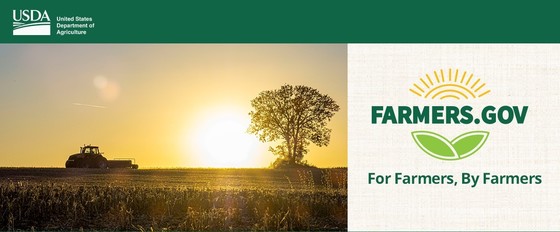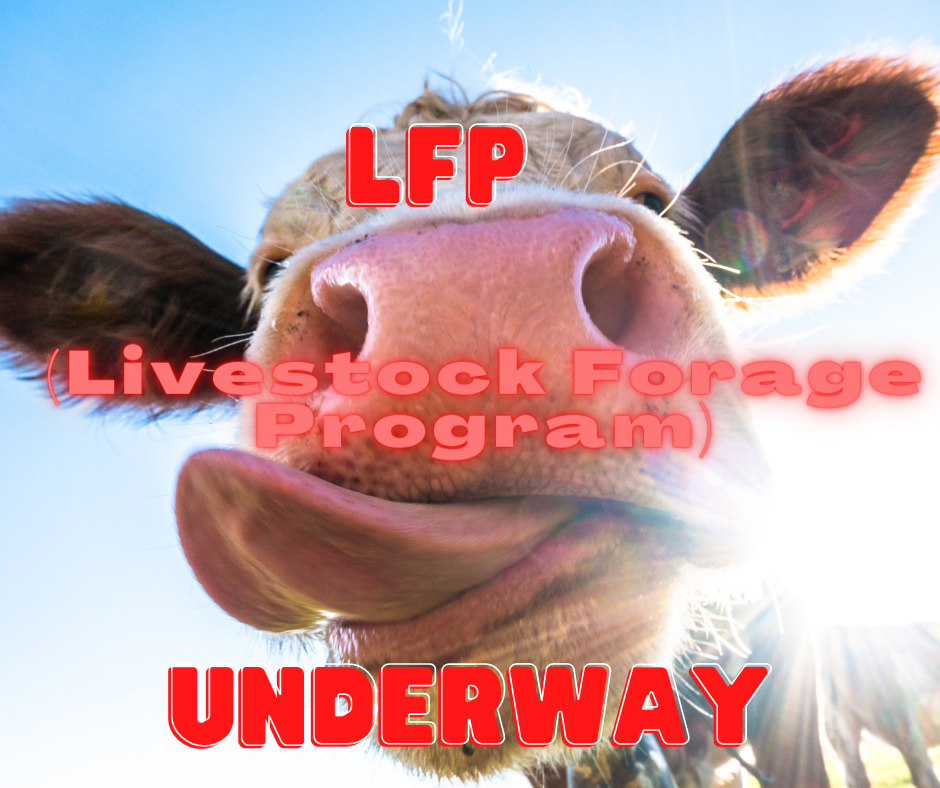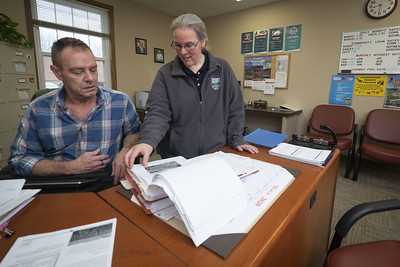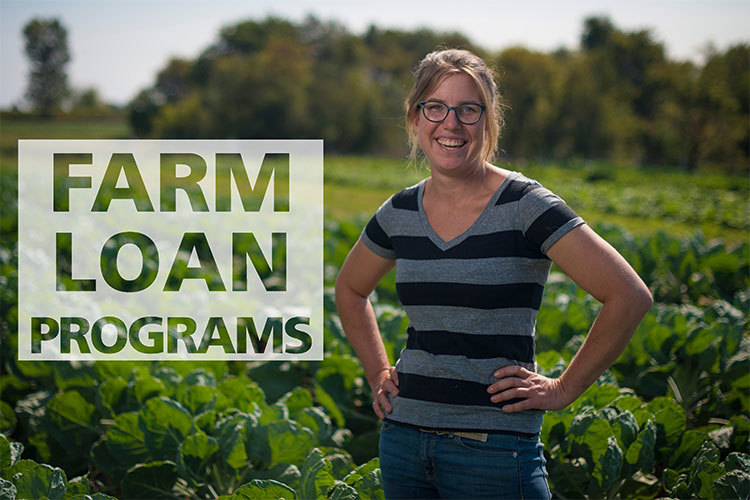
|
|
Craig County Updates - September 2022
|
|
|
|
Farm Service Agency | Natural Resources Conservation Service | Risk Management Agency
|


Important Dates:
-
November 7- Ballots mailed to eligible voters.
-
December 5-Last day to return completed ballots to the USDA Service Center.
|
 |
|
Signup for Text Alerts!
Do you receive our Text Alerts? The fastest way to receive reminders of important program deadlines from Craig County FSA is by text message. Producers who have not already signed up can do so by:
- Creating a new text message on your cell phone.
- Type 372669 as the phone number.
- In the message box, type OKCRAIG
Press Send. A confirmation message will be received if successful.
|

LFP signup is underway. You may call the office for an appointment. You must have an updated acreage report on file. If they are not updated, there will be a $31 per farm fee. If you have land that you lease from someone, we will need a written lease agreement. You can pick that up from our office. We will not load your LFP application until all lease forms are signed and returned.
Call (918)256-6882 Ext. 2 for an appointment.

ELAP provides emergency assistance to eligible livestock, honeybee, and farm-raised fish producers who have losses due to disease, adverse weather or other conditions, such as blizzards and wildfires, not covered by other agricultural disaster assistance programs.
Eligible losses include:
-
Livestock - grazing losses not covered under the Livestock Forage Disaster Program (LFP), loss of purchased feed and/or mechanically harvested feed due to an eligible adverse weather event, additional cost of transporting water because of an eligible drought and additional cost associated with gathering livestock to treat for cattle tick fever.
-
Honeybee - loss of purchased feed due to an eligible adverse weather event, cost of additional feed purchased above normal quantities due to an eligible adverse weather condition, colony losses in excess of normal mortality due to an eligible weather event or loss condition, including CCD, and hive losses due to eligible adverse weather.
-
Farm-Raised Fish - death losses in excess of normal mortality and/or loss of purchased feed due to an eligible adverse weather event.
If you’ve suffered eligible livestock, honeybee, or farm-raised fish losses during calendar year 2022, you must file:
- A notice of loss within 30 calendar days after the loss is apparent (15 days for honeybee losses)
- An application for payment by Jan. 30, 2023
|

Using the correct signature when doing business with FSA can save time and prevent a delay in program benefits.
The following are FSA signature guidelines:
- A married woman must sign her given name: Mrs. Mary Doe, not Mrs. John Doe
- For a minor, FSA requires the minor's signature and one from the minor’s parent
Note, by signing a document with a minor, the parent is liable for actions of the minor and may be liable for refunds, liquidated damages, etc.
When signing on one’s behalf the signature must agree with the name typed or printed on the form or be a variation that does not cause the name and signature to be in disagreement. Example - John W. Smith is on the form. The signature may be John W. Smith or J.W. Smith or J. Smith. Or Mary J. Smith may be signed as Mrs. Mary Joe Smith, M.J. Smith, Mary Smith, etc.
FAXED signatures will be accepted for certain forms and other documents provided the acceptable program forms are approved for FAXED signatures. Producers are responsible for the successful transmission and receipt of FAXED information.
Spouses may sign documents on behalf of each other for FSA and CCC programs in which either has an interest, unless written notification denying a spouse this authority has been provided to the county office.
Spouses cannot sign on behalf of each other as an authorized signatory for partnerships, joint ventures, corporations or other similar entities. Likewise, a spouse cannot sign a document on behalf of the other in order to affirm the eligibility of oneself.
Any member of a general partnership can sign on behalf of the general partnership and bind all members unless the Articles of Partnership are more restrictive. Spouses may sign on behalf of each other’s individual interest in a partnership, unless notification denying a spouse that authority is provided to the county office. Acceptable signatures for general partnerships, joint ventures, corporations, estates, and trusts must consist of an indicator “by” or “for” the individual’s name, individual’s name and capacity, or individual’s name, capacity, and name of entity.
For additional clarification on proper signatures contact your local FSA office.
|

The U.S. Department of Agriculture (USDA) is updating its farm loan programs to better support current borrowers, including historically underserved producers. These improvements are part of USDA’s commitment to increase equity in all programs, including farm loans that provide important access to capital for covering operating expenses and purchasing land and equipment.
The 2018 Farm Bill authorized FSA to provide equitable relief to certain direct loan borrowers, who are non-compliant with program requirements due to good faith reliance on a material action of, advice of, or non-action from an FSA official. Previously, borrowers may have been required to immediately repay the loan or convert it to a non-program loan with higher interest rates, less favorable terms, and limited loan servicing.
Now, FSA has additional flexibilities to assist borrowers in such situations. If the agency provided incorrect guidance to an existing direct loan borrower, the agency may provide equitable relief to that borrower. FSA may assist the borrower by allowing the borrower to keep their loans at current rates or other terms received in association with the loan which was determined to be noncompliant or the borrower may receive other equitable relief for the loan as the Agency determines to be appropriate.
USDA encourages producers to reach out to their local loan officials to ensure they fully understand the wide range of loan and servicing options available that can assist them in starting, expanding or maintaining their operation.
Additional Updates
Equitable relief is one of several changes authorized by the 2018 Farm Bill that USDA has made to the direct and guaranteed loan programs. Other changes that were previously implemented include:
- Modifying the existing three-year farming experience requirement for Direct Farm Ownership loans to include additional items as acceptable experience.
- Allowing socially disadvantaged and beginning farmer applicants to receive a guarantee equal to 95%, rather than the otherwise applicable 90% guarantee.
- Expanding the definition of and providing additional benefits to veteran farmers.
- Allowing borrowers who received restructuring with a write down to maintain eligibility for an Emergency loan.
- Expanding the scope of eligible issues and persons covered under the agricultural Certified Mediation Program.
Additional information on these changes is available in the March 8, 2022 rule on the Federal Register.
More Background
FSA has taken other recent steps to increase equity in its programs. Last summer, USDA announced it was providing $67 million in competitive loans through its new Heirs’ Property Relending Program to help agricultural producers and landowners resolve heirs’ land ownership and succession issues. FSA also invested $4.7 million to establish partnerships with organizations to provide outreach and technical assistance to historically underserved farmers and ranchers, which contributed to a fourfold increase in participation by historically underserved producers in the Coronavirus Food Assistance Program 2 (CFAP 2), a key pandemic assistance program, since April 2021.
Additionally, in January 2021, Secretary Vilsack announced a temporary suspension of past-due debt collection and foreclosures for distressed direct loan borrowers due to the economic hardship imposed by the COVID-19 pandemic.
Producers can explore available loan options using the Farm Loan Discover Tool on farmers.gov (also available in Spanish) or by contacting their local USDA Service Center. Service Center staff continue to work with agricultural producers via phone, email, and other digital tools. Due to the pandemic, some USDA Service Centers are open to limited visitors. Producers can contact their local Service Center to set up an in-person or phone appointment to discuss loan options.
|

In this Ask the Expert, Lisa Duriancik answers questions about her work to quantify the effects of voluntary conservation on water quality in fields and selected watersheds. Lisa is the Watersheds Assessment Leader for USDA’s Conservation Effects Assessment Project (CEAP), an effort led by USDA’s Natural Resources Conservation Service (NRCS).
How do CEAP findings inform conservation efforts?
We need data to measure the effects of both individual conservation practices and combinations of conservation practices to maximize environmental benefits, and to understand how our field-level efforts impact broader ecosystems and communities.
I work with producers and land managers, conservationists, and scientists to measure the outcomes of voluntary conservation in watersheds. I’m interested in how individual conservation practices on one field, and how systems of practices, impact water quality metrics such as reduced nutrient leaching or reduced soil erosion. I’m also interested in how the sum of voluntary conservation efforts across an entire watershed – including many farm fields – impacts water quality throughout for the local community or region.
We currently have 24 active watershed studies. You can see the locations of these studies in the below map and find out more about the research going on at each site. These findings strengthen our science base for conservation, improve conservation planning, refine our methods and tools, and ultimately help NRCS deliver more focused, strategic conservation opportunities to support productive agricultural lands and environmental benefits – including improved water quality – nationwide.
To read the full blog visit farmers.gov/blog/ask-the-expert-qa-on-water-quality-outcomes-voluntary-conservation-with-lisa-duriancik
|
|
|
|
|
USDA Service Center
235 W Hope Ave Vinita, OK 74301
Phone: 918-256-6882 Ext: 2
Fax: 855-417-7212
|
|